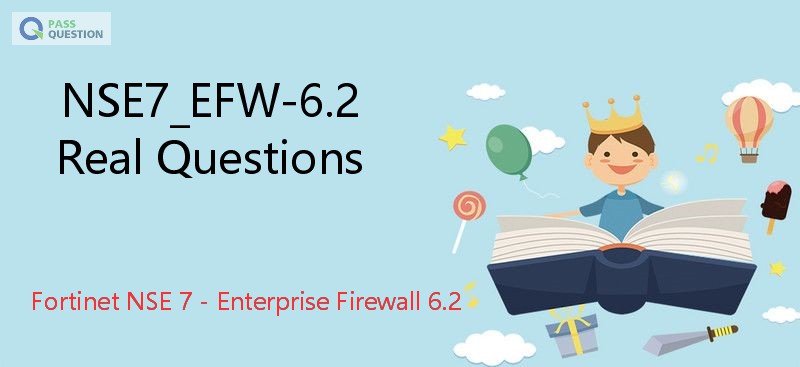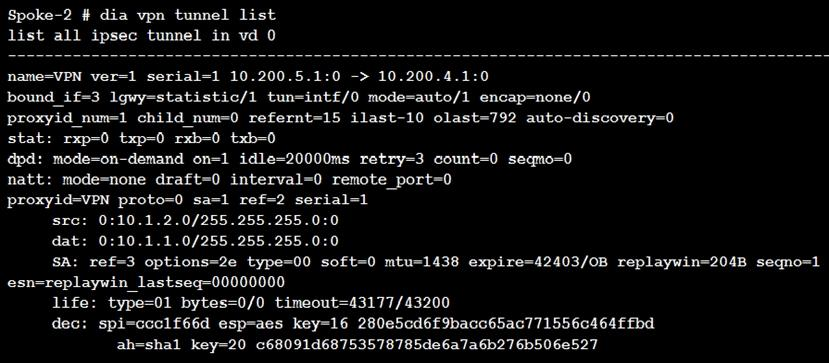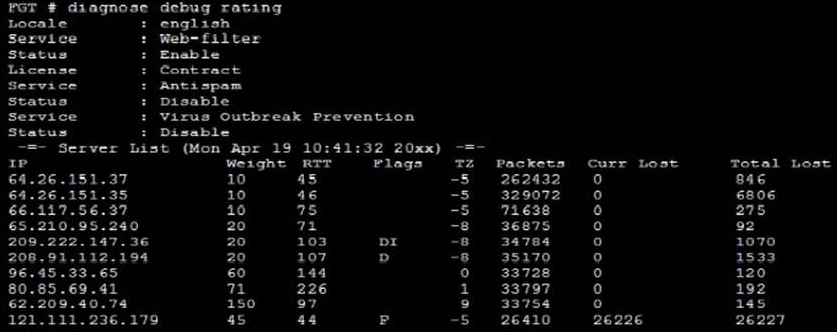NSE7_EFW-6.2 Real Questions - Fortinet NSE 7 - Enterprise Firewall 6.2
NSE7_EFW-6.2 certification is a hot Fortinet NSE 7 - Enterprise Firewall 6.2 exam. PassQuestion new updated NSE7_EFW-6.2 Real Questions which is important in your exam preparation.PassQuestion provides you with the real Fortinet NSE7_EFW-6.2 exam environment as these products are built by IT examiners so you experience the real exam features in our products. PassQuestion NSE7_EFW-6.2 exam coverage and accuracy are both excellent. We guarantee that using our NSE7_EFW-6.2 Real Questions will adequately prepare you for your Fortinet NSE 7 - Enterprise Firewall 6.2 NSE7_EFW-6.2 exam.

About the NSE 7 Certification
The NSE 7 Network Security Architect designation recognizes your advanced skills ans ability to deploy, administer, and troubleshoot Fortinet security solutions.We recommend Passcert guide for network and security professionals who are involved in the design, administration, and support of security infrastructures using Fortinet solutions.To obtain certification, you must pass at least one Fortinet NSE 7 exam.
You must successfully pass at least one of the NSE 7 exams:
Fortinet NSE 7 - Advanced Threat Protection
Fortinet NSE 7 - Enterprise Firewall
Fortinet NSE 7 - Secure Access
Fortinet NSE 7 - Cloud Security
NSE 7 certification is valid for two years from the date of completion.
NSE7_EFW-6.2 Exam Information
Fortinet NSE 7 - Enterprise Firewall 6.2
Exam series: NSE7_EFW-6.2
Number of questions: 30
Time allowed to complete: 60 minutes
Language: English and Japanese
Product version: FortiOS 6.2
Status: Available
View Online Fortinet NSE 7 - Enterprise Firewall 6.2 NSE7_EFW-6.2 Free Questions
1.Which two configuration settings change the behavior for content-inspected traffic while FortiGate is in conserve mode? (Choose two.)
A. IPS failopen
B. mem failopen
C. AV failopen
D. UTM failopen
Answer: AC
2.Refer to the exhibit, which contains the partial output of a diagnose command.

Based on the output, which two statements are correct? (Choose two.)
A. Anti-replay is enabled.
B. DPD is disabled.
C. Remote gateway IP is 10.200.4.1.
D. Quick mode selectors are disabled.
Answer: AC
3.Refer to the exhibit, which contains the output of a diagnose command.

Which two statements regarding the output in the exhibit are true? (Choose two.)
A. FortiGate will probe 121.111.236.179every fifteen minutes for a response.
B. Servers with a negative TZ value are experiencing a service outage.
C. Servers with the D flag are considered to be down.
D. FortiGate used 209.222.147.36as the initial server to validate its contract.
Answer: AD
4.Which two statements about application layer test commands are true? (Choose two.)
A. They are used to filter real-time debugs.
B. They display real-time application debugs.
C. Some of them can be used to restart an application.
D. Some of them display statistics and configuration information about a feature or process.
Answer: CD
5.Which three conditions are required for two FortiGate devices to form an OSP adjacency? (Choose three.)
A. OSPF costs match
B. OSPF peer IDs match
C. Hello and dead intervals match
D. OSPF IP MTUs match
E. IP addresses are in the same subnet
Answer: CDE
6.Which two statements about bulk configuration changes using FortiManager CLI scripts are correct? (Choose two.)
A. When executed on the Device Database, you must use the installation wizard to apply the changes to the managed FortiGate.
B. When executed on the Policy Package, ADOM database, changes are applied directly to the managed FortiGate.
C. When executed on the All FortiGate in ADOM, changes are automatically installed without creating a new revision history.
D. When executed on the Remote FortiGate directly, administrators do not have the option to review the changes prior to installation.
Answer: AD
- TOP 50 Exam Questions
-
Exam
All copyrights reserved 2025 PassQuestion NETWORK CO.,LIMITED. All Rights Reserved.

